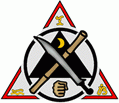written by Kenny Barry
Most people would probably agree that having a swimmer’s build would be really nice. Most people would also agree that it takes a certain amount of work to obtain such a physique, not to mention genetic qualifications. All too often, one may read about losing fat while building muscle, and while many of these programs are factual, just as many ” if not more ” are some type of scam.
After reviewing several articles and speaking with professional athletic trainers, one constant seems to hold a true work ethic. Before one can even think about staring a routine, one has to have a strong understanding of work ethics and commitment to “gaining the mass while losing that fat.” The three-step precursor to building muscle and losing fat is as follows: adequate amounts of nutrition, sleep and exercise. For argument’s sake, let’s say that sleep is not an issue, and you are getting the proper amount of it. Now we have two areas to address: nutrition and exercise.
The focal point of the next few pages will be geared toward the most effective type of nutrition and exercise to gain muscle and lose fat. Many people feel that you have to do one or the other; however, this is not true. The respiratory system, the vascular system, the muscular system and the digestive system are all in one body, though they are separate systems. They all work together, yet separately, all at the same time with proper nutrition and exercise fundamentals. Being that muscle is denser than fat, often people get discouraged right away because they are building the muscle and losing the fat. However, the numbers on the scale don’t show the dynamics of what really is going on inside the body. Nutrition and exercise have a strong relationship, and proper nutrition is important when you are involved in physical activity.
Basically, there are three groups of exercise: strength, flexibility and cardiovascular. In order to build the muscle, one must stimulate the muscular system. The easiest way to achieve this is by weight training. This topic should not be ignored. There have been many studies done on the benefits of weight training. Most studies show that multi-joint exercise, like bench presses and squats, allow you to make big gains, not only in muscle size and density, but also in increasing growth hormones and testosterone levels in males. Furthermore, squats and bench presses will engage more major and ancillary muscle fibers than many other exercises. As far as muscle building is concerned, you can break it up into three major sections (which have three major sub-sections): A. pushing-muscles of the upper body (chest, shoulders, triceps), B. pulling-muscles of the upper body (back, biceps, neck), C. three major lower body muscles (quads, hamstrings, calves). Once there is an understanding of muscle developments, you can take it in any direction you so desire. For most people, the hardest part is getting started. The second hardest part is sticking to it.
Cardiovascular training, such as running and aerobics, is the key to burning fat. Aerobic activities will burn the fat without really building the muscles. Weight training mainly builds muscles. Fat loss can be achieved by prolonged sub-maximal cardiovascular training. High intensity training will also help reduce lactate accumulation by preventing its formation. A good example of this type of training would be running for 40 minutes and sprinting 100 yards every mile. Participating in exercises such as these at least twice a week will aid in getting rid of body fat. Both strength and cardio exercise need to be as routine as brushing your teeth in order for them to be beneficial to your physique. Without proper diet to support this type of activity, not much will happen, aside from fatigue.
“Cavemen” would only eat twice a day at most, so the body would automatically store as much as it could for energy later. Many people who are trying to lose fat while building muscle don’t eat enough times per day. Recent studies have shown that six small meals per day will keep your energy levels high, and your amino acid storage steady, to allow your muscles to grow. In order for your body to assimilate and use the food you ingest, small and more frequent meals are more advantageous than fewer, larger meals. The muscles primarily consist of two things: amino acids (proteins) and water. This being said, it should be obvious that we should consume the proper amounts of water and protein. According to a study in the Canadian Journal of Applied Physiology, if you want to pack extra muscle, you will need roughly one gram of protein per pound of body weight. Quality protein burns into amino acids in the body, and with an exercise program in place, the demand for amino acids goes through the roof since the aminos are responsible for muscle growth and repair. Foods to stay away from would be anything fried. Fried food will not help you build muscle and shed unwanted fat.
In short, you have three areas: muscle building exercise, fat burning exercise, and diet. In speaking with several professional trainers, they have said that diet is probably up to 80 percent of the whole picture. There is no diet that will help you build muscle without exercise, and you can exercise all you want, but muscles need food to really grow.
